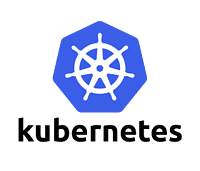What I would have wanted to know about AWS
GovCloud
While assisting a US municipal government with their cloud
migration, we recently had the opportunity to deploy a complete
hosting platform to the GovCloud
Region. Our task was to provide a platform based on kubernetes,
running within a secure VPC built on private subnets and with VPN
links to an enterprise-class network that spanned multiple
datacenters.
While we had researched
particulars of GovCloud before getting into the project, we ran
into a few surprises along the way. This is the type of post I had
wanted to find earlier.
This post aims to
provide an overview of the AWS "GovCloud Region", how it is
not just another region in the AWS cloud
you have come to know and understand, the types of problems you
will run into when you go to deploy your services to GovCloud, and
notes on how we overcame these obstacles to use GovCloud
effectively while reusing our existing code and experience for AWS.
This also serves as an introductory post to a mini-series on
“Deploying to GovCloud” - be sure to check back on the follow-up
posts where we’ll get deeper into solutions for the problems
discussed here.
Consider this a
supplement to the AWS doc on specific differences
between GovCloud and the "standard regions".
What is GovCloud?
When reading the AWS documentation on GovCloud (and both
the FAQ and the User's Guide), you get the impression "it's
just another region" (perhaps with a few minor changes).
In practice, the difference with GovCloud regions is more
fundamental than that.
GovCloud is a separate
cloud "partition". At the moment there is one "region" in GovCloud,
us-gov-west-1, though it's likely that additional regions will come
online in the future (AWS has noted a US-East region coming in
2018). Interestingly, there are also other "partitions", for a
total of 3: aws, aws-us-gov, and aws-cn (China). For details on
those partitions, see the mini section on
partitions in this doc.
Why would you want to use GovCloud?
Amazon GovCloud is AWS's isolated cloud partition for government
contractors and agencies needing to host Controlled Unclassified
Information (CUI). According to Amazon itself, "AWS GovCloud (US)
gives vetted government customers and their partners the
flexibility to architect secure cloud solutions that comply with:
the FedRAMP High baseline, the DOJ's Criminal Justice Information
Systems (CJIS) Security Policy, U.S. International Traffic in Arms
Regulations (ITAR), Department of Defense (DoD) Cloud Computing
Security Requirements Guide (SRG) for Impact Levels 2, 4 and 5,
FIPS 140-2, IRS-1075, and other compliance regimes." See also this PDF.
In other
words,
- it's physically and logically separated from the public AWS
cloud everyone else is using;
- both physical access to the hardware running the cloud, as well
as virtual access to the management console is through a vetted,
investigative process;
- GovCloud is suitable for government related services, platforms
offered by government agencies, etc
- GovCloud complies with a number of different security
regulations and policies your organization may need to follow;
- as a developer/provider for a service, it may be in your
contract to host on GovCloud;
- and as a developer of a commercial or open source tool, you may
want to provide resources (AMIs, etc) to users running on
GovCloud.
Restrictions/Limitations on GovCloud, and how to work
around them
 Access to GovCloud is limited,
you must have a justified reason and the proper credentials to get
access. Few devops projectseven have access. This means AMIs for
your favorite Kubernetes deployment tool are not likely to be
available. It also means that—since your favorite devops tools may
not get any testing on GovCloud—developers may not know about bugs
until you run into and report them. You can work around this by
testing your tools as thoroughly as possible in planning stages of
the projects, and by taking on extra support tasks like building
AMIs typically provided by upstream developer.
Access to GovCloud is limited,
you must have a justified reason and the proper credentials to get
access. Few devops projectseven have access. This means AMIs for
your favorite Kubernetes deployment tool are not likely to be
available. It also means that—since your favorite devops tools may
not get any testing on GovCloud—developers may not know about bugs
until you run into and report them. You can work around this by
testing your tools as thoroughly as possible in planning stages of
the projects, and by taking on extra support tasks like building
AMIs typically provided by upstream developer.
Different API
Endpoints - devops tools
need to support these endpoints (based on the GovCloud
region).
IAM in the AWS Web Console
blocks access to the "Switch Role" functionality that is normally
available. It seems possible to assume roles with AWS tools on the
CLI (but we didn't investigate that one to be sure, we were limited
on time and wanted a consistent auth workflow across both the AWS
console as well as the cli utilities).
Must use aws-us-gov in AWS Resource Numbers (ARNs) instead
of aws, see this
doc (as well as the
previous reference on AWS cloud partitions) - devops scripts,
resource management code, and Terraform modules, etc, may have
hard-coded in the aws, and you may need to update that or add
support for flexibility with the ARN. Here is an example from
the AWS provider in Terraform. Review your devops tools and
scripts.
 While there are DNS servers in the
VPC, there is no Route53 service (API). This breaks many devops
tools that make the assumption Route53 is / will be available (kops
w/ kubernetes, for example). To be fair, some tools (like kops)
provide an alternative to Route53 for bootstrapping the cluster,
though our testing found the features to be buggy and not yet
production quality. We worked around the need for Route53 by
deploying our own self-healing and automated DNS solutions. A
future post will dive into the details of our Route53
replacements.
While there are DNS servers in the
VPC, there is no Route53 service (API). This breaks many devops
tools that make the assumption Route53 is / will be available (kops
w/ kubernetes, for example). To be fair, some tools (like kops)
provide an alternative to Route53 for bootstrapping the cluster,
though our testing found the features to be buggy and not yet
production quality. We worked around the need for Route53 by
deploying our own self-healing and automated DNS solutions. A
future post will dive into the details of our Route53
replacements.
While there are "egress-only"
gateways, they are IPV6-only, and the managed NAT gateway service
is unavailable, so you either need to provide your own NAT gateway
(on an EC2 instance), or route 0.0.0.0/0 over your VPN/etc links
and thru your Corporate Network. We used both methods to address
the need for private network topologies and NAT gateways. A future
post will dive into the details of NAT and network routing in our
VPC.
Here is the list of available
services.. not all
services are available, and some services (like Direct
Connect) may differ from
their counterparts on the regular cloud. Be sure to review the AWS
docs for each service you plan to use in your project.
While the "GovCloud Region"
may appear to be another option in AWS' collection of regions,
there are restrictions that are specific to GovCloud. These
restrictions are likely to impact the project you run on GovCloud,
and we recommend getting up to speed on the details as early as
possible. We also have a service dedicated to helping you address
your GovCloud requirements which you can find here.
We hope this
introductory post has been helpful, stay tuned for the next post in
this series on GovCloud where we will dive deeper into options for
IAM, DNS and NAT (to work-around what isn't available), and running
modern devops on AWS GovCloud in general.

If you liked this blog
post you might also be interested in these posts:
Subscribe to our blog via email
Email subscriptions come from our Atom feed and are handled by Blogtrottr. You will only receive notifications of blog posts, and can unsubscribe any time.
Do you like this blog post and need help with Next Generation Software Engineering, Platform Engineering or Blockchain & Smart Contracts? Contact us.